3SM Tyrfing: new missile for the Norwegian and German navies
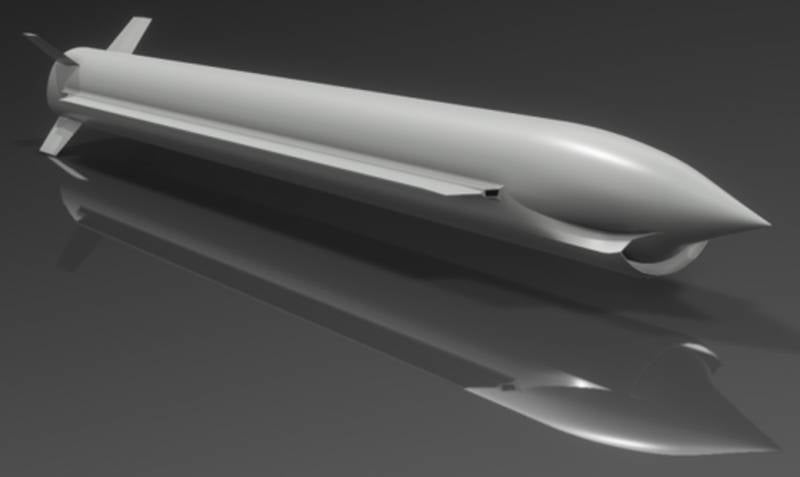
FNSM rocket concept. Perhaps the future 3SM will be similar
The Norwegian Ministry of Defense and Kongsberg announced the start of development of the promising 3SM Tyrfing anti-ship missile. The new missile system is proposed to be created within the framework of international cooperation, and Germany should become the main partner. The finished jointly developed product will have to appear, enter service and enter the international market by the mid-thirties.
Plans announced
At the beginning of the last decade, a new NSM (Naval Strike Missile) anti-ship missile developed by Kongsberg Defense and Aerospace entered service with Norway and several other countries. In recent years, this company has repeatedly mentioned the possibility of creating a next-generation “naval strike missile” under the symbol FNSM (Future NSM). The company revealed general considerations for such a project and even showed the possible appearance of a promising rocket.
Now a promising rocket with improved characteristics is moving into the category of real projects. On November 24, the Norwegian Ministry of Defense officially announced the start of a program to develop a new missile. It revealed some of the current organizational and other plans. A similar press release was issued by Kongsberg, which will take a leading role in the new project.
The Ministry of Defense reports that Kongsberg will have to use its existing experience and new developments to create a promising missile with the working title Super-Sonic Strike Missile (3SM). The project was also given the name Tyrfing, in honor of the enchanted sword from Scandinavian mythology that can withstand any blows and can cut metal and stone.
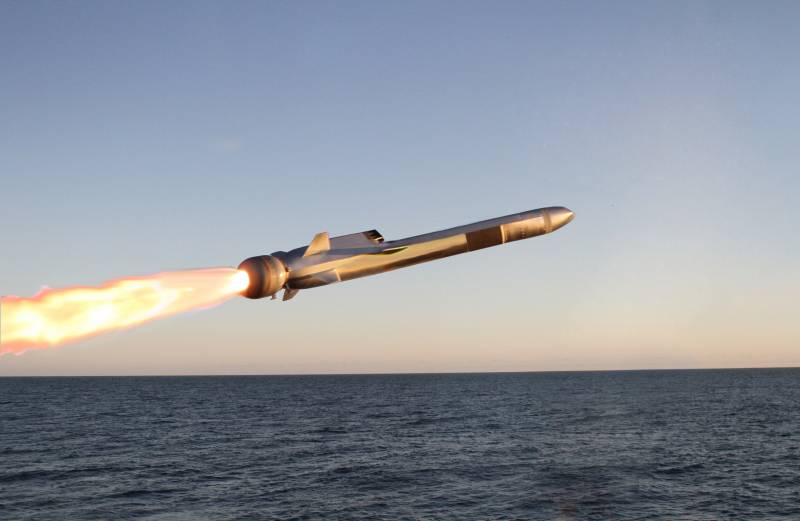
NSM rocket after launch
The military department prepared and submitted to the government an official proposal to launch the development of 3SM. A positive decision is expected in the near future. In addition, the Ministry of Defense plans to involve German industry in the program. Early next year, the German government will consider the possibility of participating in a joint project.
As has already been announced, the Norwegian industry will be represented in the new program by the Kongsberg company. It has not yet been announced which German enterprises will help it create a promising rocket. However, such information may appear in the very near future, incl. until Berlin makes an official decision.
Due to its high complexity, the development of the Tyrfing rocket will take quite a long time. The timing of certain stages of the project has not yet been specified, but all work should be completed by 2035. It is assumed that the new anti-ship missile will enter service with the two developing countries, and will also be introduced to the international market. Norway is likely counting on repeating or improving the commercial results of the current NSM project.
Concept and plans
The 3SM project is actually at the stage of preparation for the launch of work, and therefore the customer and the contractor / performers are ready to disclose only the most basic data, without clarifying specific issues. Thus, the latest press releases mention that the goal of the project is to create a long-range supersonic missile for surface platforms.
In the context of the new Tyrfing project, we recall the FNSM concept, proposed in the recent past and currently at the preliminary development stage. This project proposed the design of a rocket with high supersonic or hypersonic flight speed and corresponding combat qualities. It is quite possible that these ideas will form the basis of the new 3SM project and will be implemented in the interests of the navies of at least two countries.
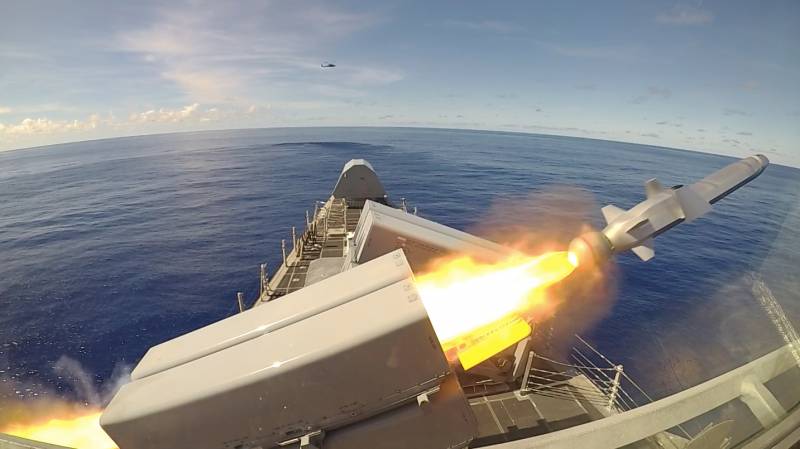
Launching NSM from a standard container launcher
In press releases about the new 3SM project, the general appearance of the hypothetical FNSM rocket, which was worked out earlier, was published. The computer model shown allows you to understand the main design features, layout solutions, etc. However, other details of the concept cannot be determined from this image. The achievable level of tactical and technical characteristics is also questionable. In addition, it is unclear how similar the actual future design will be to the current concept.
The published image shows the rocket in an elongated cylindrical body with a pointed ogival nose cone. Below it is a protruding air intake, smoothly connected to the main part of the body. Along the sides of the hull there are protrusions of unknown purpose, probably a folding wing. The tail has X-shaped stabilizers/rudders.
The presence of an air intake clearly indicates the use of an air-breathing engine. The mention of high super- or hypersonic flight speeds suggests that the concept provides for the installation of a ramjet engine corresponding to such a flight mode. In addition, to launch from a surface platform and accelerate to the ramjet start speed, a separate solid propellant starting engine is required.
The shown design of the rocket allows the use of guidance means of different classes. In particular, a small-sized radar seeker can be hidden under the pointed nose fairing. The use of satellite and/or inertial guidance systems should also be expected.
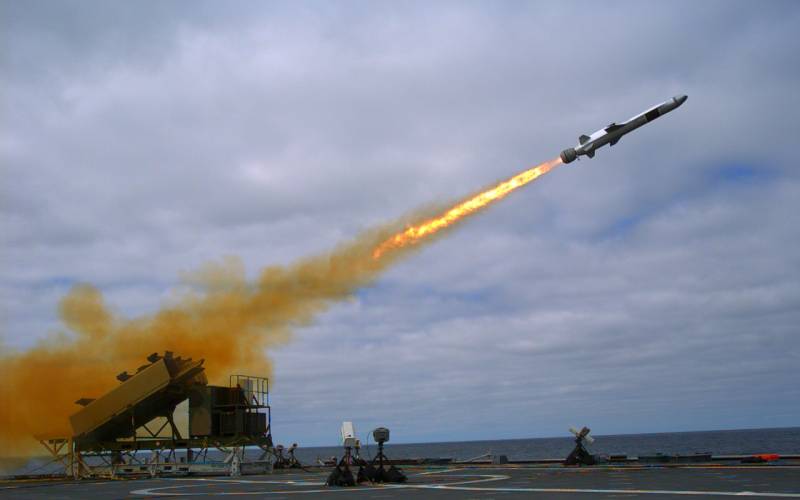
Flight range is questionable. The serial NSM is capable of hitting targets at ranges of up to 200-250 km. In the new project this parameter should increase, but its future level is unknown. At the same time, the export version of the rocket will fly only 300 km - of course, if by the time of its appearance the manufacturing countries comply with existing international agreements.
It is reported that 3SM missiles will be included in the ammunition load of ships in Norway and Germany, relevant in the middle of the next decade. Thus, in the Bundeswehr Navy, the first carriers of new missiles will most likely be frigates of the Baden-Württemberg type. They are now armed with Harpoon anti-ship missiles in launchers on deck. In the future, a transition to missiles of other types is possible, and the external placement of launchers will simplify this process. At the same time, it cannot be ruled out that in the future Germany will have new ships initially capable of carrying advanced missiles.
The likely carriers of Tyrfing missiles in the Norwegian Navy are frigates of the Fridtjof Nansen project. Now they are equipped with basic NSM anti-ship missiles and also use deck launchers. In addition, they have universal Mk 41 vertical installations. Upgrading such ships will not be a big problem.
Project Perspectives
At the moment, the 3SM project is at the stage of preparing work and solving organizational issues. Norway will soon make an official decision on launching a development program, and a similar document is expected from the German government early next year. After this, the two countries, represented by several organizations, will be able to start a joint project.
Organizing development, launching a joint project and finding funding for it are perhaps the simplest tasks within the framework of a promising program. The process of developing a missile with the required level of tactical and technical characteristics will be much more difficult and longer. Kongsberg and a number of German enterprises have extensive experience in creating missile weapons for fleet, and it can really contribute to the speedy solution of the tasks.
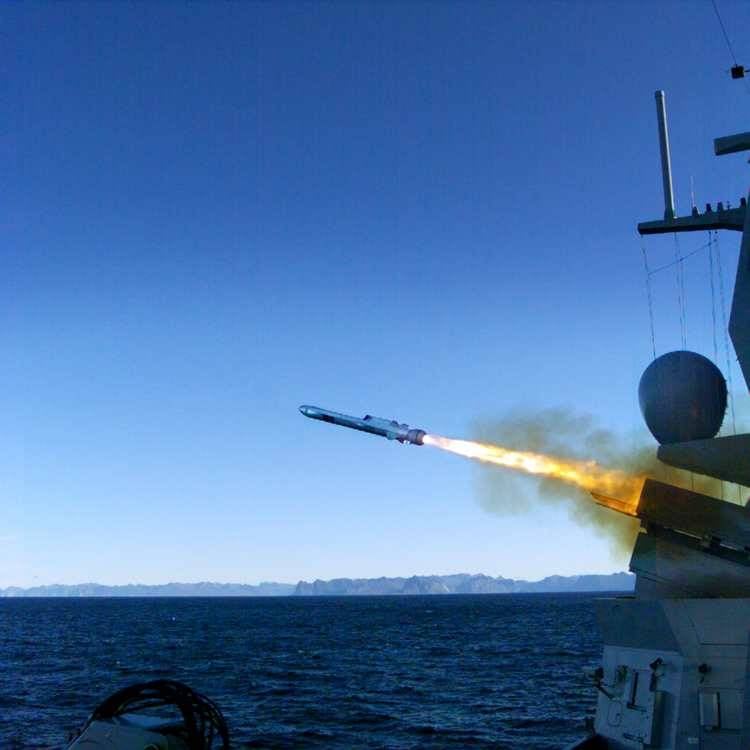
However, the goal of the new Tyrfing project appears to be to create a hypersonic missile, which dramatically increases its complexity. To develop such a product, it will be necessary to conduct a lot of complex research and solve a number of characteristic technical issues. Only after this will the technical and technological foundation for the development of a real rocket appear. Whether it will be possible to complete all this work and create a 3SM product in the allotted 10-12 years is a big question.
It cannot be ruled out that the Norwegian Ministry of Defense and Kongsberg have all the necessary information and can make balanced and sober assessments. In this case, they may indeed have a chance to create the Tyrfing rocket by the specified 2035. However, regardless of the speed and results of the work, Norway and Germany find themselves in a catching-up position, and in this regard the situation will not change. Hypersonic missile systems are already in service with some countries, while Norway is only planning to develop them. It can be expected that by the time 3SM appears, new generation systems will have entered service with foreign navies.
Uncertain Future
Thus, two more countries can join the general “hypersonic race”, combining the efforts and projects of different states and armies. Norway has almost decided to launch the 3SM program, and Germany may soon join it. And the goal of joint work, it seems, will be precisely the creation of a new hypersonic missile for surface platforms.
The appearance and adoption of the Tyrfing product, expected in the middle of the next decade, will be able to seriously change the strike capabilities of the Norwegian and German Navy, as well as, probably, third countries. However, the possibility of creating such weapons in the desired time frame is still in question. In addition, there has long been a lag behind leading countries, and it cannot be ruled out that developing countries will no longer be able to realize all the characteristic advantages of hypersonic weapons.
Information